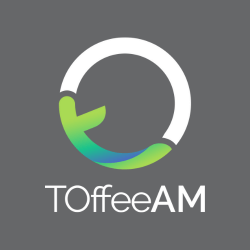The problem
Additive manufacturing (AM) has opened up new ways to make smart industrial products. However, the aeronautic and automotive industries often produce parts using design software that pre-dates 3D printing. New design software was required that would be flexible enough to keep up with ongoing advances in AM.
Dr Francesco Montomoli, a Reader in Computational Aerodynamics at Imperial College London, worked on the idea for new design software for AM with PhD students Audrey Gaymann and Marco Pietropaoli. After three years’ work they had made enough breakthroughs and generated sufficient interest to launch TOffeeAM Ltd to commercialise their code.
The company’s software uses innovative mathematical modeling to design and improve components used in aircraft and car engines. It is able to explore geometric complexities within systems and has already been used to develop new designs for heat exchangers, fuel nozzles and valves. The heat transfer capabilities of TOffeeAM allows the code to be robust and accurate for aerospace applications. The interactive capabilities of their system means that it can work up to 20 times faster than existing design tools. By making components more resilient, lighter and more robust it can make some products 40% more fuel efficient.

The company has already been used to make components for world-leading AM businesses like General Electric Aviation and Baker Hughes. TOffeeAM is now aiming to consolidate its place in aviation and automotive industries while seeing if other fields, such as oil and gas, will also exploit this new resource.
Dr Montomoli says: “The Enterprise Fellowship has given us a great opportunity to learn from experienced people in several fields, from marketing to IP. An added bonus is being able to engage with the other fellows, sharing common challenges and opportunities.
Associated Programme

